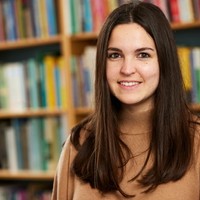High-Int
Highly-efficient integrated antennas for the new generation of communication systems in the millimetre band
- Vinnova
- |
- Smartare Elektroniksystem

Highly-efficient integrated antennas for the new generation of communication systems in the millimetre band
High-Int is a Vinnova project, funded under the Smartare Elektroniksystem framework.
Wireless communications are rapidly evolving. In particular, users are demanding new services in the present networks that require of higher data transfer. The new generation of mobile communications, 5G, started to be deployed at the end of 2019. However, 5G will only cover the present needs of the users. Further research to increase the rates of wireless communications is needed now to cover the expectations in a near future. Since most of the low frequency spectrum is already crowded, the only possibility is increasing the operational frequency where narrow bands permit larger data transfer and short delays.
High-Int will enable a complementary cooperation between both Ericsson and KTH. KTH has experience in the development of innovative antenna solutions, typically fully-metallic antennas based on the concept of lenses and leaky-waves, and Ericsson AB is a leading technology-driven company in telecommunications.

Pilar Castillo-Tapia is a PhD student at KTH.
When and why did you decide to pursue a career in electromagnetics?
I decided to pursue my career in electromagnetics when I was doing my BsC thesis in Spain. I studied Telecommunication engineering and there I took several courses in electromagnetics that, in fact, did not arouse my curiosity. However, during the thesis I learned that working in electromagnetics is more than just doing boring integrals and that there were more interesting things to learn than a previously thought. That is the reason why I continued my education getting a master degree and now pursuing a PhD here in Sweden.
What challenges are you addressing in the Vinnova project: High-Int?
I am currently doing my PhD at KTH where we actively collaborate with Ericsson in developing new antenna solutions in the millimeter-wave band. Specifically in High-Int, I have been involved in the design of antennas suitable for indoor communication systems, which will work at very high frequency. For these applications, antennas are required to have multiple beam capabilities and high efficiency. During this process, we have also tried different manufacturing techniques and we have learned how to make our designs robust to manufacturing tolerances.
What are your long-term goals for your career in electromagnetics in Sweden?
I would like to continue collaborating with the industry trying to find new suitable solutions to the challenges that are yet to come. I would also like to guide the new generations to get the competencies that the companies working in electromagnetics need.